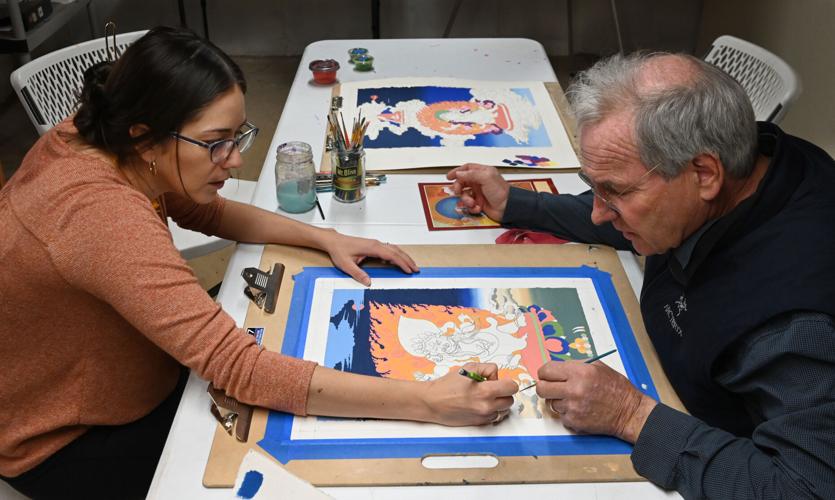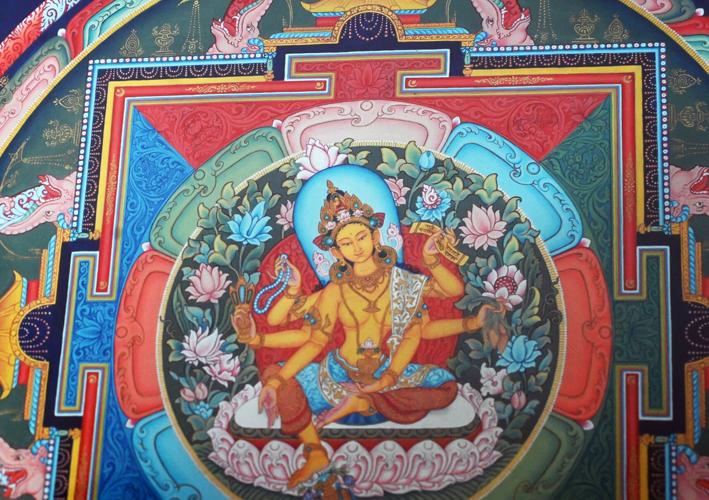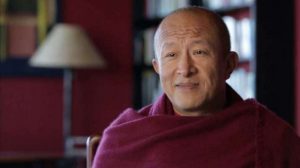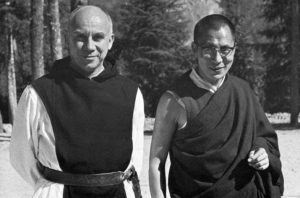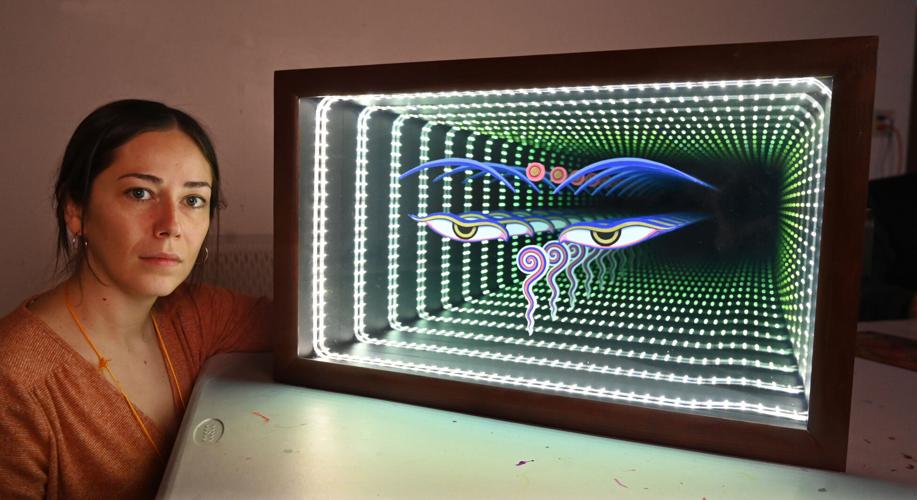
Chelsea Beach, a resident of Colorado Springs, Colorado, has launched classes to help residents use Buddhist art for healing, appreciation, and religious practice. Beach studied traditional painting techniques known as paubha with master artist Lok Chitraker in Nepal before returning to the US to teach. Today, Beach runs Himalayan Art School, which hosts courses, talks, and features an online art gallery with paintings created by her students.
The religious painting technique that Beach teaches originated with the Newar people of Nepal. Paubha paintings draw from a library of symbols and colors, allowing an adept viewer to read their messages in much the same way that we would read a text. While, traditionally, the creation and appreciation of such images held richly religious meaning, many people today create and display the paintings for their aesthetic value.
In the traditional context, paubha paintings can guide a practitioner through meditation, as their various symbols connect to Buddhist ideals and states of mind. The paintings feature bodhisattvas, each of which has a particular role in Buddhist teaching.
“There’s certain moments in painting when it’s just dots, and you build and build,” Beach said. “You have a lot of time to become familiar with your patterns and your habits. It gives moments where you can begin to watch yourself in your patterns, rather than being stuck and blind in the forest.” (The Gazette)
The paintings are also treated as sacred or even as holy beings themselves. Practitioners might place offerings in the form of food, flowers, and water before a painting. As a painting is completed, mantras will be chanted and incense offered to fully bring the bodhisattva into the painting. A last touch is always painting the eyes, which brings the painting and bodhisattva to life.
“Let’s say someone has a lot of post-traumatic stress disorder,” Beach said. “The monk would tell that person to practice visualizing Green Tara because she is the mother of all buddhas. You’re unlocking that universal, motherly realm so your neural pathway for compassion is opened up. It’s about channeling the energy from whatever divine being.” (The Gazette)
Rick Meinig, a surgeon in Colorado Springs and student of Beach since 2018, first painted a Medicine Buddha with her and is now working on a Vajrapani painting. “It’s nice in the sense that you have known subject material and style, and then you bring your own interests and tastes and abilities,” Meinig said. “It’s a form of relaxing meditation. It’s very much like Bob Ross, that kind of feeling. I’m not an artist, but it’s always new and experimental.” (The Gazette)
Beach grew up in Colorado and traveled to India and Nepal when she was 19 years old. She returned to the US to finish her degree in school at the University of Colorado-Boulder, and then returned to Nepal in search of a master artist with whom to study. That is where she met Lok Chitraker and became his apprentice. He taught her and later invited her to teach in Nepal before encouraging her to return to the US to teach Americans.
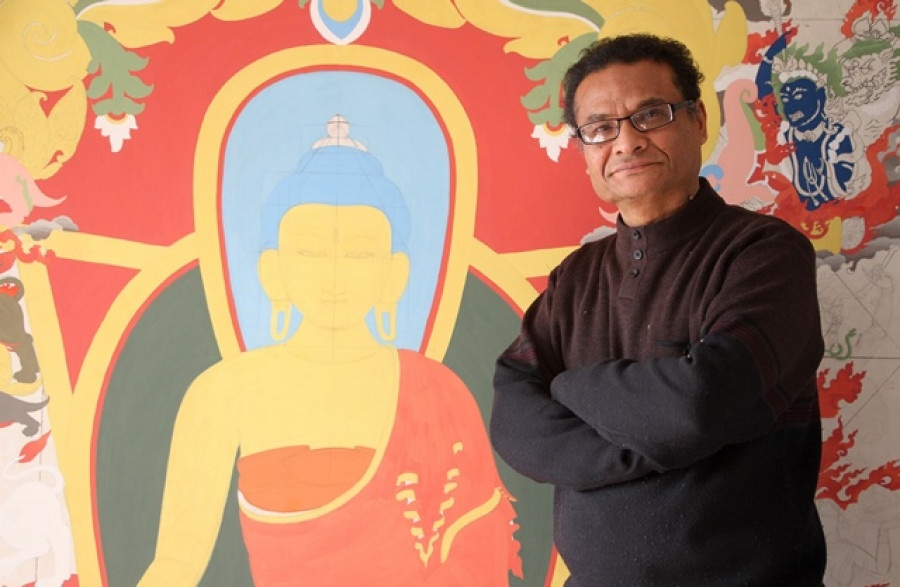
“He taught a couple of times in the states, and expressed how people really need that kind of experience of meditation and healing,” Beach explained. “He believes the divine images want to be spread.” (The Gazette)
She opened the Himalayan School of Art in 2018 and today has more than a dozen students between there and the Manitou Art Center in Manitou Springs, just west of Colorado Springs. In addition to her painting work, Beach is studying for a master’s degree in social work so that she can offer art therapy to those who would benefit.
See more
Colorado Springs woman paints, teaches Buddhist art (The Gazette)
Chelsea beach, founder of the Himalayan art school, gives a talk about the symbolism of mandalas (Facebook)
Himalayan Art School
Lok Chitraker (Mahakala)
Related news reports from BDG
Brooklyn Museum to Unveil a New Gallery Devoted to Buddhist Art
British Buddhist Artist’s First Foray into Children’s Books Bears a Message of Environmental Concern
Art Gallery of Greater Victoria to Host Research and Exhibition Project on Contemporary Buddhist Art
Hong Kong’s First Buddhist Art Museum Inaugurated at Tsz Shan Monastery
Related features from BDG
Love Carved in Stone: Appreciating Buddhist Art in a Non-Buddhist Way
Vivid Realizations: A Journey Through Buddhist Art


